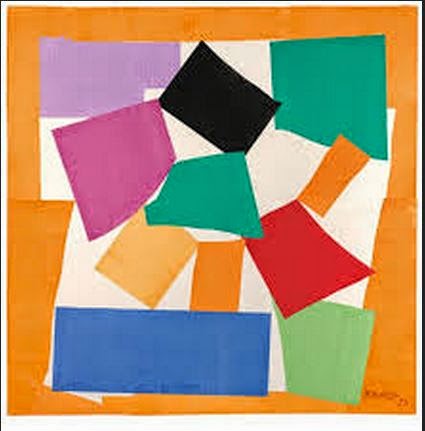Sometimes when I finish a good book I'm sad because I just don't want to end. It's like that with Exploring Ideas because I've learned so much both technically and academically. Sometimes I almost forget how much has been packed in so a process of reflection is a good idea. The way I usually do this is to look at my assignments and revisit my Tutor Reports. I find this both refreshes my memory and sometimes enables new thinking.
Part 1
My holiday in India dominated Part 1 and I was unable to develop useful work using it as my theme. I didn't see that a contemporary twist might be possible from traditional roots. Whilst the work I produced was something less than exciting my disappointment with it enabled a lot of learning particularly about the creative process.
Part 2
In Part 2 I was in completely unknown territory and the learning curve was steep. On a practical level I became more confident as I grew more familiar with my materials and produced some work I was proud of. I missed the opportunity to label my samples in a way that would make them a ready reference point (but I won't do it again). Probably the most important thing to come out of this section was the need to consider external influences and what I might learn from those with more experience.
Part 3
I was on firmer ground in Part 3 - I had some technical skills to draw on. I was able to produce samples that surprised me and research artists whose work was relevant and helpful. I didn't capitalise fully on the strength of some of my samples probably because I still have some problems recognising what's worth pursuing. I have a real tendency to re-invent the wheel and make life more difficult than it needs to be.
Part 4
I enjoyed Part 4 so much. Doing research like this gives me a much better appreciation of the wealth of art available as a resource and introduces me to work that I might otherwise not discover. I find that even if I don't care for a piece of work I can still learn from it. I need to be more rigorous with my referencing of web text and images.
Part 5
I've had no Tutor Report for this work yet so these reflections are based solely on my thoughts. I've tried to pull things together in Part 5 by referencing the work of others, looking at the market and using new ideas that have occurred in the course. I hope I've followed through ideas in a clear and logical way whilst retaining an open enough mind to pursue something when it crops up at the eleventh hour! Part 5 has left me with lots going on in my head for future work.
Overall
There are three things that stand out as learning highlights
- Gaining an understanding of the term "key qualities". This was a light bulb moment and so obvious I could kick myself.
- Recognising the importance of the creative process and the natural progression of an idea.
- The benefits to my work of referencing within a contemporary context.
My hopes for Exploring Ideas were very much the same as those I had for A Creative Approach: to learn, develop and be secure in the knowledge the course I have chosen is helping me attain those aims.
I have one disappointment. I used the OCA website extensively when I was doing A Creative Approach; information was easily accessible and the blogs of other students were an excellent learning tool. I have found the changes to the site have made life far more difficult and nowadays I rarely log on.





































